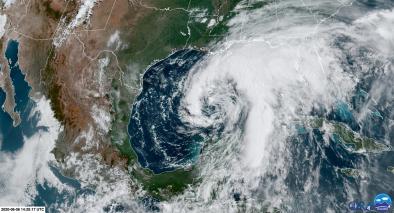Slowdown in Landfalling Tropical Cyclone Motion in South China
Study key findings & significance
-
Translation speed of landfalling tropical cyclones in south China has experienced a significant slowdown by 1.2 m s−1 during 1979–2019
-
The slowdown is a balance of the opposite effects of the negative phase of the Pacific Decadal Oscillation and the Indian Ocean sea surface temperature warming
-
The results suggest that the effects of climate change and natural variability on tropical cyclone translation speed can offset each other
Plain Language Summary
Understanding changes in tropical cyclone (TC) translation speed is of great social and scientific concerns due to the enormous TC-induced disasters. From a view of a specific site, slower TC motion indicates a longer linger time and thus greater TC-induced disasters. China is one of the countries suffering the most TC disasters, while its change in translation speed of landfalling TCs remains unclear. Here we found that the translation speed of landfalling TCs in south China during the boreal summer has significantly decreased by 1.2 m s−1 during 1979–2019, which is driven by the deceleration in the TC embedded steering flow. The steering flow shows a southwestward anomaly in south China, which acts to decelerate the climatological northeastward steering and eventually slow the landfalling TC motion. This slowdown is found to be a balance of the opposite effects of the negative phase of the Pacific Decadal Oscillation and sea surface temperature (SST) warming in the Indian Ocean since the late 1990s. Given the recent Indian Ocean SST warming has been viewed as a footprint of climate change, the results have important implications for understanding the roles of external and natural variability in changes in TC translation speed.
Related Content



